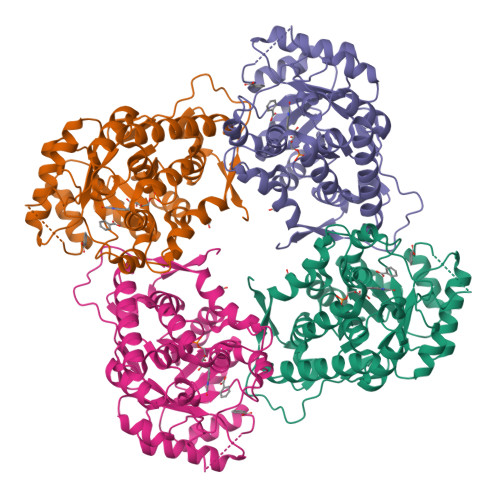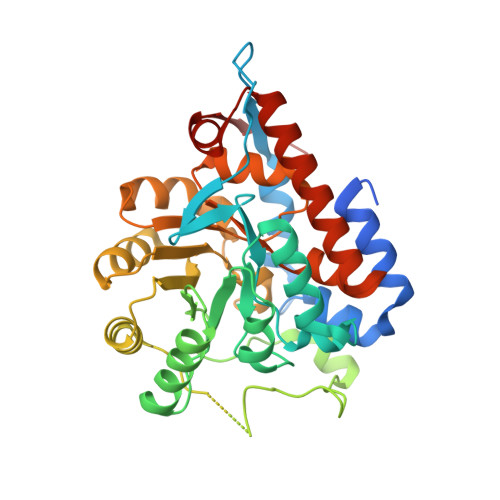Biochemical and structural explorations of alpha-hydroxyacid oxidases reveal a four-electron oxidative decarboxylation reaction.
Yeh, H.W., Lin, K.H., Lyu, S.Y., Li, Y.S., Huang, C.M., Wang, Y.L., Shih, H.W., Hsu, N.S., Wu, C.J., Li, T.L.(2019) Acta Crystallogr D Struct Biol 75: 733-742
- PubMed: 31373572
- DOI: https://doi.org/10.1107/S2059798319009574
- Primary Citation of Related Structures:
5ZZQ, 5ZZS, 5ZZX, 5ZZY, 6A00, 6A0D, 6A0G, 6A0M, 6A0O, 6A0Y, 6A11, 6A1A - PubMed Abstract:
p-Hydroxymandelate oxidase (Hmo) is a flavin mononucleotide (FMN)-dependent enzyme that oxidizes mandelate to benzoylformate. How the FMN-dependent oxidation is executed by Hmo remains unclear at the molecular level. A continuum of snapshots from crystal structures of Hmo and its mutants in complex with physiological/nonphysiological substrates, products and inhibitors provides a rationale for its substrate enantioselectivity/promiscuity, its active-site geometry/reactivity and its direct hydride-transfer mechanism. A single mutant, Y128F, that extends the two-electron oxidation reaction to a four-electron oxidative decarboxylation reaction was unexpectedly observed. Biochemical and structural approaches, including biochemistry, kinetics, stable isotope labeling and X-ray crystallography, were exploited to reach these conclusions and provide additional insights.
Organizational Affiliation:
Genomics Research Center, Academia Sinica, Taipei 115, Taiwan.


















